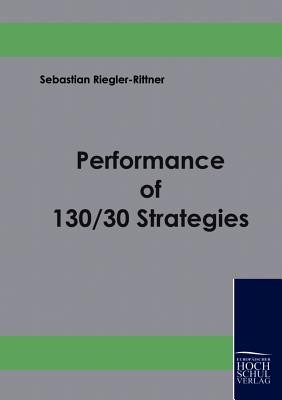
- Išsiųsime per 10–14 d.d.
- Autorius: Sebastian Riegler-Rittner
- Leidėjas: Europaischer Hochschulverlag Gmbh & Co. Kg
- Metai: 2009
- Puslapiai: 268
- ISBN-10: 3941482211
- ISBN-13: 9783941482210
- Formatas: 14.8 x 21 x 1.6 cm, minkšti viršeliai
- Kalba: Anglų
- Extra -15 % nuolaida šiai knygai su kodu: ENG15
Atsiliepimai
Aprašymas
One of the latest innovations in asset management that has rapidly increased in popularity in recent years is the so-called '130/30 strategy'. Through a combination of leverage and short selling this strategy enables portfolio managers to underweight unattractive securities to a much bigger extent than it is possible with long-only portfolios. This book analyzes the performance of 130/30 and other active extension portfolios that are built according to a quantitative security selection model using typical value fundamentals, such as the dividend yield or the price-to-earnings ratio. In comparison to the benchmark and traditional long-only portfolios the 130/30 strategy does outperform the former two over a 15-year time period from 1993 to early 2008, even after accounting for costs. When analyzing the risk-adjusted returns in more detail it becomes obvious that a 130/30 strategy is an especially promising alternative to passive or active long-only investment strategies in rather weak market phases as they were present during the early years of this decade. That is why a dynamic strategy that switches between 130/30, long-only and index depending on the respective market phase is analyzed as well. When using for example an autoregressive model to select the appropriate strategy such a dynamic approach delivers significantly higher returns than a static active extension portfolio does.EXTRA 15 % nuolaida su kodu: ENG15
Akcija baigiasi už 2d.01:14:03
Nuolaidos kodas galioja perkant nuo 10 €. Nuolaidos nesumuojamos.

- Autorius: Sebastian Riegler-Rittner
- Leidėjas: Europaischer Hochschulverlag Gmbh & Co. Kg
- Metai: 2009
- Puslapiai: 268
- ISBN-10: 3941482211
- ISBN-13: 9783941482210
- Formatas: 14.8 x 21 x 1.6 cm, minkšti viršeliai
- Kalba: Anglų




Atsiliepimai